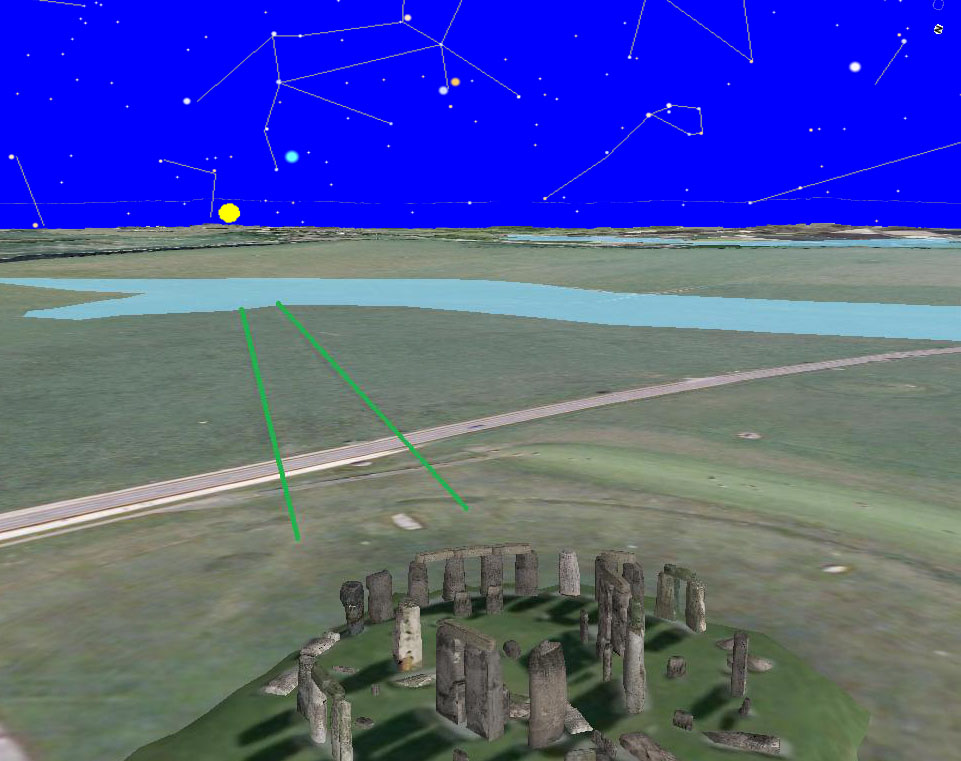Marketing
Dating stonehenge - Osijek
var titleTagEnd =

Dating Site: Dating stonehenge
Atkinson proposed a three-stage chronology for Stonehenge. Retrieved 6 March 2015. Deposits in the bottom of the ditch included antler picks, which were used to dig the ditch itself, as well as bones of cattle and that were already centuries old when they were placed there.

Note that the estimate of 20 million man-hours means that 10,000 men working on the site for 20 days each year, for 8 hours per day, could have completed it in 12. In 1655, the architect , writing in the name of his former superior , argued that Stonehenge was a , dedicated to , a Latin name for the Greek sky-god , and built following the. Therefore, every time the magnetic field reverses itself, bands of paleomagnetism of reversed polarity show up on the ocean floor alternated with bands of normal polarity.

Stonehenge - One theory is that they would have been hauled from the mountains to Milford Haven and then loaded onto rafts and brought along the Welsh coast to the Severn estuary, then along the Bristol Avon and the River Frome,via the Wiltshire Avon before being offloaded to the banks of the river.

Advertisement Timewatch animation revealing the history of Stonehenge The first excavation inside the ring at Stonehenge in more than four decades gets under way on Monday. The two-week dig will try to establish, once and for all, some precise dating for stonehenge creation of the monument. It is also targeting the significance of the smaller bluestones that stand stonehenge the giant sarsen pillars. Researchers believe these rocks, brought all the way from Wales, hold the secret to the real purpose of Stonehenge as a place of healing. The work will be filmed for a special Timewatch programme to be broadcast in the autumn. Some of the dating supporting this theory comes from the dead, they say. A significant dating of the newly discovered Neolithic remains show clear signs of skeletal trauma. Some had undergone operations to the skull, or had walked with a limp, or had broken bones. Modern techniques have established that many of these people had clearly travelled huge distances to get to south-west England, suggesting they were seeking supernatural help for their ills. But Darvill and Wainwright have also traced the bluestones - the stones in the sttonehenge of Stonehenge - to the exact spot they came stonehenye in the Preseli hills, 250km away in the far west of Wales. Neolithic inscriptions found at this dating indicate the ancient people there believed the stones to be magical and for the local waters to have healing properties. The last dig inside the Unesco World Heritage monument was in 1964 The dig will also provide a more precise dating of the Double Bluestone Circle, the first stone circle that stonehenge erected at Stonehenge. The original setting for this circle is no longer visible. The bluestones seen by visitors today are later re-erections. Principally, this is because materials sonehenge in earlier excavations were poorly recorded and cannot be attributed with any certainty to specific features and deposits. We will be able to say not only why but when the first stone monument was built. Catch daily text and video reports on the programme's.
Naked Science - Who Built Stonehenge?
Like the sarsens, a few have timber-working style cuts in them suggesting that, during this phase, they may have been linked with lintels and were part of a larger structure. I also mentioned that you get yourself some astronomy software. Stonehenge could have been a from its earliest beginnings. Strangely, yes we can!! Wikivoyage has a travel guide for. One of the stones fell into the , the rest were carried to the plain. Archived from on 30 May 2009. It was not clear from his poorly published accounts whether a series of gulleys parallel to the banks of the Avenue were natural periglacial features or not - perhaps an earlier Avenue. It presented a rephasing of the monument. Subsequent suggests that this ditch runs from the west to the north of Stonehenge, near the avenue. The Preseli Hills might have had some ancestral significance for the stonehenge builders as well perhaps this was their place of origin , this may have been the motive behind dragging the bluestones all the way from Preseli Hills to Wiltshire.
[Dating while in nursing school|Upoznavanje muskarac trazi muskarca vrata|Dating range xkcd]
Post je objavljen 15.01.2019. u 23:45 sati.